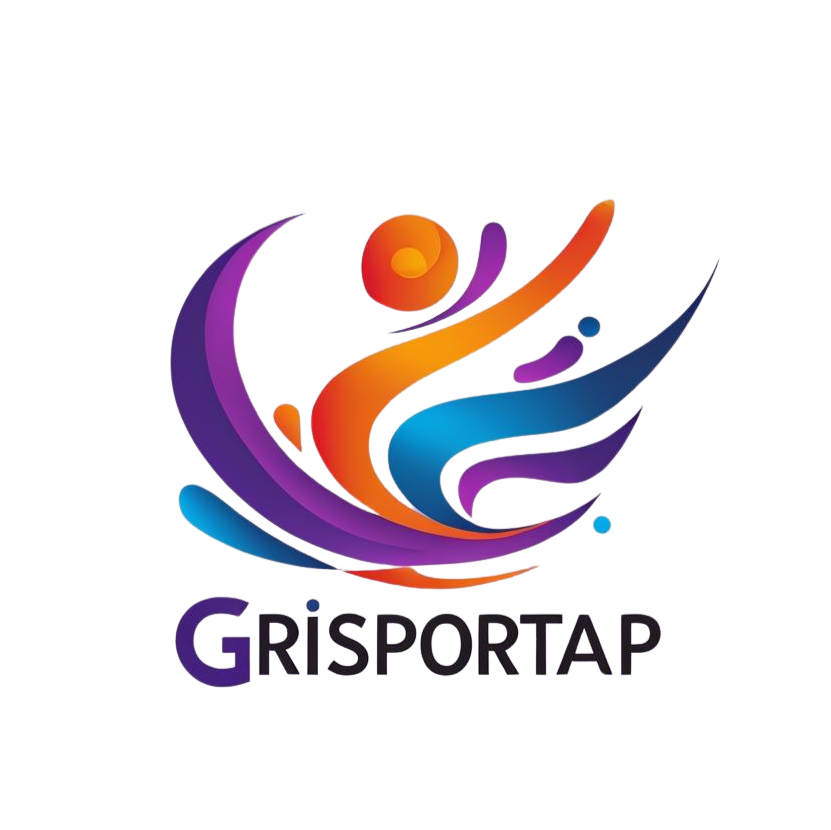dance community checklist starts here to give your studio a clear, practical roadmap you can use right away.
Do you want your studio to run smoother, feel more welcoming, and give every child a better experience? This guide pulls together proven steps for front-of-house culture, class routines, event timelines, and safe backstage flow.
You’ll read short, actionable items for setting dates early, building volunteer teams, budgeting with a 10–15% buffer, and using simple on-site communications. These measures reduce stress and help your students leave class feeling seen and ready to grow.
Think of this as an educational, adaptable way to improve how your studio works. Use what fits your budget and values, focus on inclusive practices, and add small changes this week that compound over time.
Key Takeaways
- Use clear timelines and roles to run events and recitals with less stress.
- Prioritize welcoming studio habits so students and families feel respected.
- Budget with a buffer and plan contingencies to stay calm when plans shift.
- Simple tech and on-site communication improve safety and flow.
- Small, consistent changes build a stronger, more inclusive studio over time.
Why This Dance Community Checklist Matters Right Now
A concise plan gives staff clarity and helps parents and students know what to expect. Right now, many programs face tighter schedules, shifting venue availability, and changing family needs. A short, practical plan helps you adapt without losing quality.
How a simple process strengthens your studio, dancers, and local community:
- Make sure nothing critical slips—lock dates, hold venues, and confirm rehearsals early.
- Align staff and volunteers so the studio runs smoother and students feel supported.
- Keep families informed with save-the-date posts, newsletters, and concise reminders to parents.
What’s new this year you can apply:
- Use QR tickets and printed backups in case Wi‑Fi drops.
- Lean on on-site radios and simple project tools like Asana or Google Sheets to show who does what and when.
- Promote inclusive messaging and diverse casting to broaden interest and improve the event experience.
Results vary by context, but these steps reduce last-minute work, improve audience experience, and build trust with families and students over time.
Culture and Belonging at Your Studio
A welcoming studio culture starts with small, daily habits that show every child they belong. These habits make classes calmer, rehearsals kinder, and the season easier to manage.
Fostering inclusivity and fair stage opportunities
Train front-desk staff and teachers to greet each child by name and make eye contact as they arrive. Review casting so it reflects diverse faces and fair chances to grow.
Open, transparent communication all season
Publish a simple monthly communications calendar so parents know when to expect updates. Offer office hours, email, or a short form so families can give timely feedback.
Celebrate growth beyond trophies
Spotlight effort, attendance, and teamwork with regular shout-outs. Encourage peer support through buddy systems and mentoring from older dancers.
- Check choreography for age-appropriate themes, music, and costumes.
- Share culture expectations in writing and revisit them before major events or any venue move.
- Host low-pressure open classes to welcome newcomers and track small wins like confidence and focus.
Student Growth, Safety, and Well-Being
When you balance practice and recovery, your students stay engaged and improve faster.
Plan weekly loads so dancers build skills without overload. Make sure weekly plans mix technique, conditioning, and rest so students don’t train on consecutive heavy days.
Post a simple warm-up and cool-down protocol in each room and review it at the start of every class.
Practical safety and support steps
- Keep a basic incident log and refer injuries to qualified healthcare professionals when needed.
- Offer regular water breaks and a calm corner so a child can reset without stigma.
- Use positive, clear corrections to build psychological safety and steady student growth.
- Teach age-appropriate goal setting so students track progress across the season.
- Align rehearsal blocks with school time and family routines to lower burnout on busy days.
- Provide staff with de-escalation and inclusion training so everyone can work with diverse needs.
Communicate expectations early to parents and students about rest, nutrition, and scheduling. Review calendars monthly and adjust around exams or holidays so your program stays sustainable and kind.
Building a Capable, Caring Event Team
Start by naming who owns outcomes and who calls cues; that clarity helps the whole team work smoothly on show day.
Define core roles so people know what to do and when to arrive. Assign a producer to own results and a stage manager to call cues and run backstage flow.
Key roles and practical tasks
- Registration & box office: set clear shift times for ticket scanning and refunds.
- Hospitality: handle water, snacks, guest needs, receipts, and allergy notes.
- Volunteer coordinator: recruit, train, and supervise dressing-room and hallway monitors.
- Security & logistics: badge checks at stage door, front-of-house, and backstage access points.
Child safety and leadership practices
Make sure child safety rules are visible and enforced: a two-adult policy, controlled access, labeled pickup, and sign-in/out sheets.
Coach leaders to model calm, respectful communication so people feel safe asking for help under pressure. Share a contact sheet and radio channel plan so every role knows who to reach and when.
Prep and follow-up
Hold a 15-minute huddle before doors open to confirm cues, contingency plans, and first-aid locations.
After each block, debrief to adjust staffing and to support dancers between numbers. Small, regular reviews keep your team accountable and your event running well.
Tools and Timelines to Stay Organized
A few shared tools and a steady meeting rhythm will save you dozens of rushed hours later. Use clear systems so your team has one place to check owners, deadlines, and status. That keeps everyone on the same page and respects everyone’s time.
Project tools
Project management and shared docs
Build a master Asana board with sections for marketing, tickets, FOH, backstage, tech, and finance. Use Google Sheets to track budgets, vendors, volunteer shifts, and parent communications. Link live Docs for scripts, programs, and cue notes so edits sync across devices.
Milestones and meeting cadence
Set milestones by year and quarter: date/venue locked, save-the-date, ticket launch, lineup release, and post-mortem. Schedule meetings that ramp from monthly to weekly in the final days, with tight agendas and clear owners. Make sure you add buffers for print lead times and vendor delays.
- Establish a freeze date for program content and a separate final tech assets due date.
- Track risks in a simple list and review them each meeting until closed.
- Hold a post-mortem within 72 hours to capture action items for next year and note what worked.
Budgeting, Cash Control, and Risk Management
Start with a bottom-up budget that uses conservative revenue assumptions and a 10–15% buffer. This gives you room for under-budget attendance and over-budget costs without last-minute cuts.
Projections and expense policies
Make sure revenue lines are realistic and document expense approvals. Share simple timelines for reimbursements so people know when they’ll be paid.
- Build line-by-line costs and apply a 10–15% contingency to the total.
- Set a purchasing cutoff date to stop surprise spends in the final week.
- Keep a one-page budget summary so studio leaders can see the picture at a glance.

On-site cash control and risk steps
Set up petty cash with a written log and two-person oversight for the float or cash box on show day. Schedule secure cash drops and require receipts for payments to artists and vendors.
- Track paid vs. projected in real time and re-forecast if sales trend down.
- Confirm venue and performance insurance requirements and secure coverage before you advertise.
- Make sure credit card acceptance has a designated device and backup power.
“Small financial rules save big headaches on the day of the show.”
Tip: Create a simple risk register with triggers for weather, illness, or vendor no-shows and outline contingency steps. This is a practical way to protect people, time, and the studio’s reputation.
Venues, Stage, and Technical Readiness
Secure the venue early and block rehearsal days so your team gets the spacing and tech time it needs. This gives everyone clear times for load-in, sound check, and the final run-through.
Map the space—sketch backstage, FOH, and accessible routes to prevent bottlenecks. Mark will-call, restrooms, seating sections, and stroller/ADA access before doors open.
Decide on tickets or wristbands and set re-entry rules. Assign peak-time checks so volunteers know who scans and who handles will-call.
Technical and contingency checklist
- Collect final music files in standard formats and test playback on the house system 1–2 months out.
- Confirm lighting cue sheets and run a cue-to-cue on the actual stage.
- Print show orders, volunteer rosters, and site maps; keep extras at FOH and backstage.
- Set up walkie talkies with labeled channels for FOH, backstage, and tech; store spare batteries.
- Prepare offline backups for Wi‑Fi or power loss: paper ticket lists, cash box, and receipts.
- Schedule exact times for load-in, sound check, house open, and curtain so every role has clear marks.
“Simple venue planning reduces stress on the day and keeps the performance on track.”
Costumes, Dressing Rooms, and Backstage Flow
A clear plan for fittings, rooms, and quick changes keeps performers calm and ready. Start costume ordering 8–12 months ahead to avoid supply delays and discontinued items. Begin rolling fittings 6–8 months out and log tailoring needs with due dates by routine and dancer.
Practical steps to manage wardrobe and backstage safely:
- Order each costume early and track sizes, ship dates, and backups. Label and bag every piece by dancer and include spare tights and accessories.
- Assign a dedicated room per level or routine. Post quick-change maps with timing estimates and mark handoff points for helpers.
- Place garment racks, mirrors, and clear bins to keep traffic moving in tight spaces. Staff hallway monitors and dressing-room supervisors with radios for fast communication.
Prepare touch-up kits with safety pins, thread, double-sided tape, and a small steamer. Run a quick-change drill during spacing so everyone learns the sequence and exact time required. Keep water-only zones near costumes and a separate table for hair and makeup away from fabric.
After the show, collect rentals and returns promptly and reconcile inventory against your lists. For technical backstage tips, pair this with a backstage tech guide to align costume flow with stage cues and FOH timing.
Marketing, Community Outreach, and Ticket Sales
Start marketing early—announce the date once the venue is confirmed so parents can plan and you build momentum over 6–8 months.
Simple, ethical promotion works best. Send a save-the-date, add it to your site and newsletter, and pin it in your lobby. Choose a short hashtag and make sure it appears on graphics, emails, and signage to collect live updates and photos.

- Set tiered pricing and family bundles to honor your people and boost attendance.
- Design programs early with QR codes that link to follow-ups, surveys, or next-session registration.
- Invite local sponsors who align with your values; offer program ads and lobby tables for visibility.
- Offer light merchandise, flowers, and photo packages to increase per-ticket value.
- If you stream, test audio and camera placement at the venue and confirm rights for each routine.
- Equip the box office with QR scanning and printed lists so parents are served quickly.
Make sure you publish a short FAQ so people know parking, entry rules, and what to expect when they arrive. For a practical event planning resource, include a link to a helpful timeline like this event planning checklist.
“Clear, timely marketing reduces last-minute stress and improves the audience experience.”
Performance Week Playbook: From Call Times to Show Time
The final week is when clear signals and tight timing keep your show calm and reliable. Follow this short playbook to send the right messages, station the right people, and bring essentials so nothing derails the performance day.
Timing and communication
- Email the final lineup, venue map, parking info, and call times to parents and staff in one concise message. Release the show lineup 1–2 months out and remind families the week before.
- Print programs and post show orders backstage and near each holding room so every team sees sequence and room assignments at a glance.
- Make sure walkie talkies, spare batteries, and channel assignments are ready at check-in on performance day.
On-site roles and gear
- Assign on-duty leads per block (FOH, backstage, tech) and list relief times so no role goes uncovered.
- Pack a go-bag: chargers, gaffer tape, ziplocks, Sharpies, first-aid basics, snacks, water, and a sewing kit.
- Test music playback and mic checks at the same time of day as the show to mirror conditions.
Safety, attendance, and wrap
- Keep a printed roster for attendance and a separate list for authorized pick-ups for dancers.
- Run a short crew huddle before doors open to clarify cues, safety spots, and emergency procedures.
- After the curtain call, secure valuables, return borrowed gear, and thank teams before load-out.
Tip: Confirm front-of-house open time, seating plan, and ADA accommodations with the venue team the day before to avoid surprises.
Dance Community Checklist
A simple routine across days and months prevents last-minute scrambling and keeps students focused. Use the lists below to assign owners, save time, and protect your show day.
Daily, weekly, and seasonal tasks
- Daily: Greet students by name, update attendance, scan floors and mirrors for safety, and reply to urgent parent messages.
- Weekly: Confirm rehearsal schedules, check budget variances, and post one studio highlight on social.
- Monthly: Audit volunteer coverage, refresh the risk list, and confirm venue logistics and vendor dates.
- Seasonal: Lock date and venue, announce save-the-date, launch ticket sales, finalize the lineup, and print programs.
Operational and post-event process
- Teaching: Align lesson plans to goals, rotate feedback focus, and keep short progress notes for each child.
- Backstage: Label dressing zones, post show orders, stock quick-change kits, and assign door monitors.
- FOH: Test scanners, prep will-call, print seating charts, and brief ushers on ADA seating.
- Finance: Reconcile petty cash, log vendor payments, and file receipts within 48 hours.
Post-event: Hold a morale check with people across teams, reconcile the budget, and record clear lessons learned.
Improvement steps: Prioritize three changes for the next season, assign owners, and set deadlines so learning turns into action.
Conclusion
,Finish the season with clear steps that keep your studio running smoothly and your students more confident. A strong culture and simple systems create a better experience for every child and help each performance go as planned.
Use this practical way to support your team and the broader community. Turn planning habits into routines so rehearsals and classes respect people’s time and reduce last-minute work.
Make sure you adapt timelines to your local needs, keep backups, and document what works. Practice responsibly, keep learning from mentors and peers, and consult qualified professionals when needed.
Small, steady improvements over the year lead to calmer shows, safer spaces, and happier students. Keep the focus on safety, growth, and thoughtful planning.



